With the development of electric vehicles, the performance of battery system’s charge and discharge has been significantly improved. Consequently, ensuring its safety in design has become a major challenge for engineers.
Before discussing the centralized protection fuse design of PYTIC, let us first discuss why it is necessary to do so.
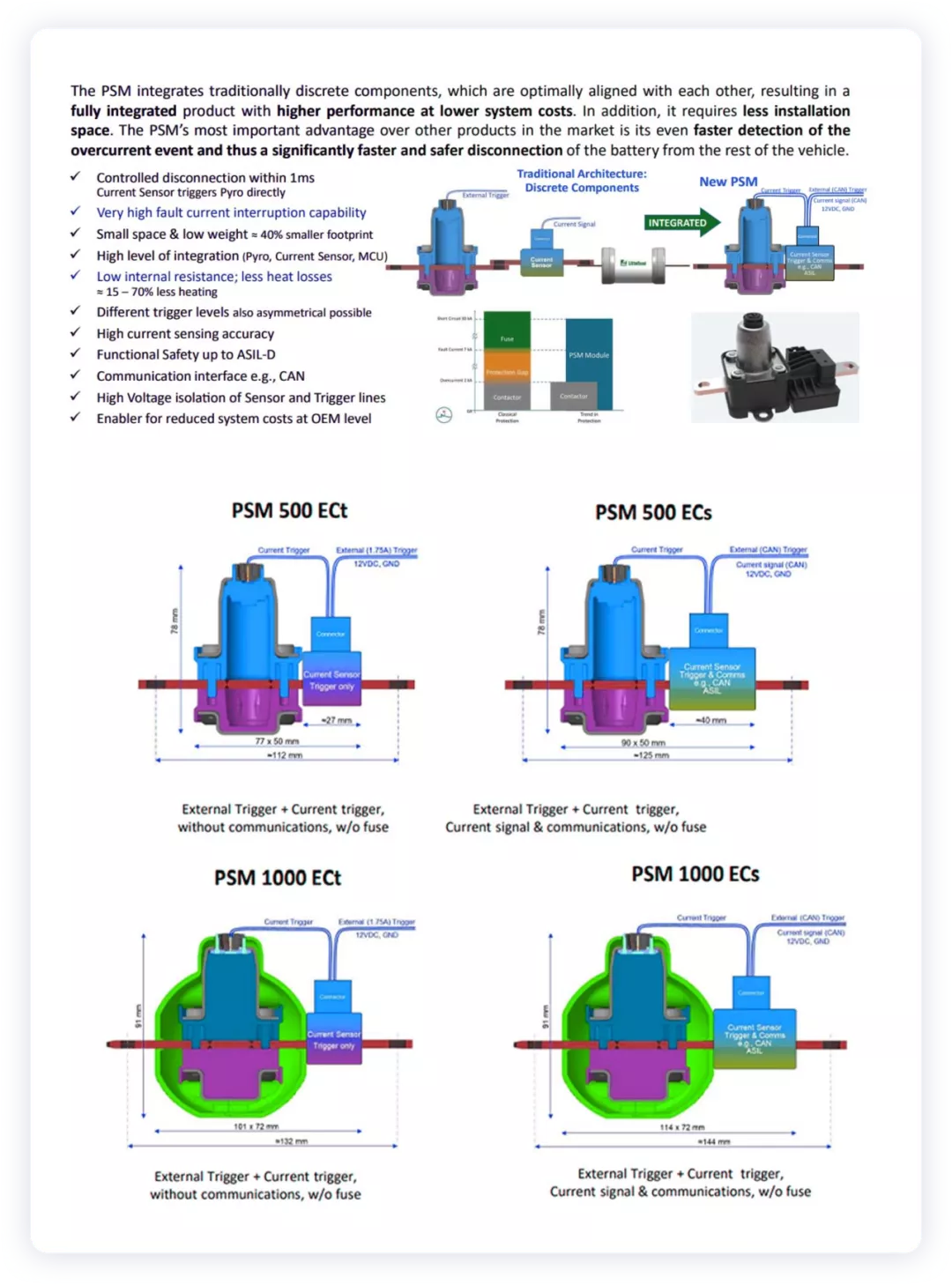
Main Development Direction (Value of Active Fuses)
In the early stages, as mentioned earlier, high-voltage circuit breaking protection design used thermal fuses and high-voltage DC contactors. However, there were problems such as:
- Service life degradation: Due to aging, thermal fuses cannot withstand multiple vehicle sudden acceleration peak current shocks.
- Overheating: High levels of heat generation under normal operation, especially in the case of Tesla’s high current charging lines, the threshold of around 300A imposes a significant impact on the system’s heat dissipation power and cost.
- System issues: The key issue is that the main circuit thermal fuse (CCC: 400A~700A) cannot rapidly cut off high-voltage circuits within the range of over-current 1kA~3kA. In addition, encountering special working conditions makes it difficult to protect high-voltage contactors, which can easily result in system adhesion.
In short, the problem lies in the selection of thermal fuses, requiring a trade-off between peak current shock resistance and high current short-circuit protection capability. Fuses and contactors cannot be well matched in the case of short circuits with high currents. When encountering very difficult issues, such as collisions (cable point erosion short circuit) and battery pack thermal runaway (with an interesting style), with high-risk abnormal conditions, high-voltage circuits cannot be rapidly cut off.
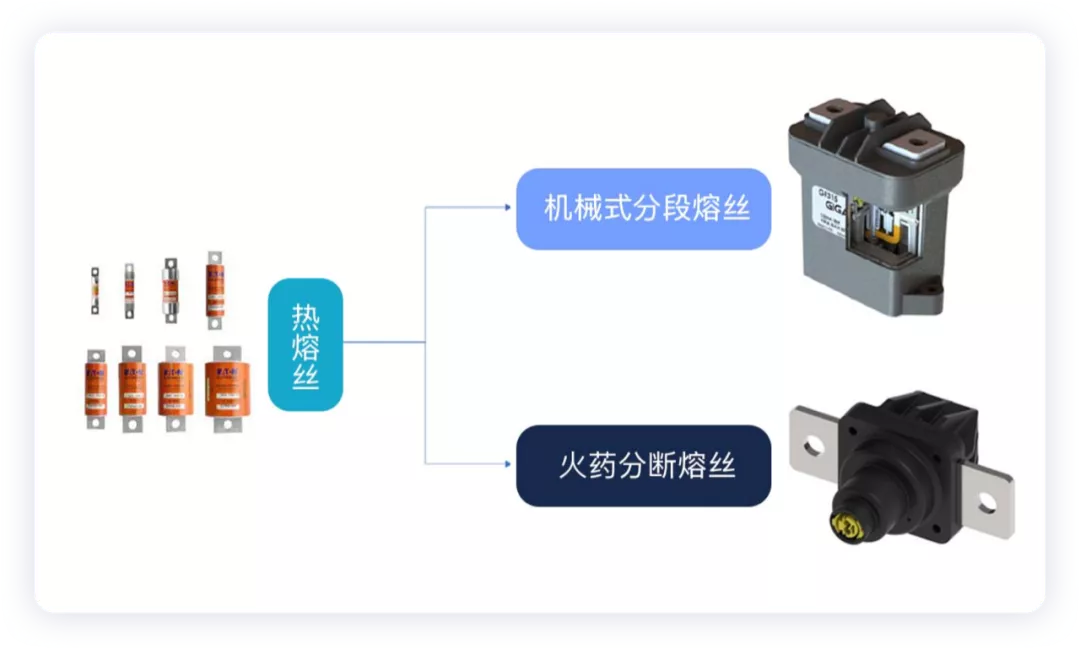
Currently, there are mainly two alternative paths: one is Autoliv’s explosive fuse disconnecting mechanism; the other is Sensata’s active and passive high-voltage circuit intelligent fuses (GFPA).
The latter mechanism works by using a group of iron core-induced high-voltage circuits. When the current exceeds the predetermined trigger current, the magnetic field produced by the iron core’s suction force will trigger the internal action mechanism to cut off high-voltage circuits in an extremely short time, thereby protecting the entire system. GFPA also integrates active control switches, which can quickly cut off high-voltage circuits under abnormal conditions.
What is PSM? What are its effects?This system’s key feature is the integration of current sensing and action, which quickly cuts off the high current to prevent subsequent damage to the contactor. In other words, the fuse sacrifices itself to protect the battery, and even the high-voltage system.
In the end, this module becomes a vulnerable component, reducing the damage rate of the high-voltage contactor (lowering the probability of adhesion).
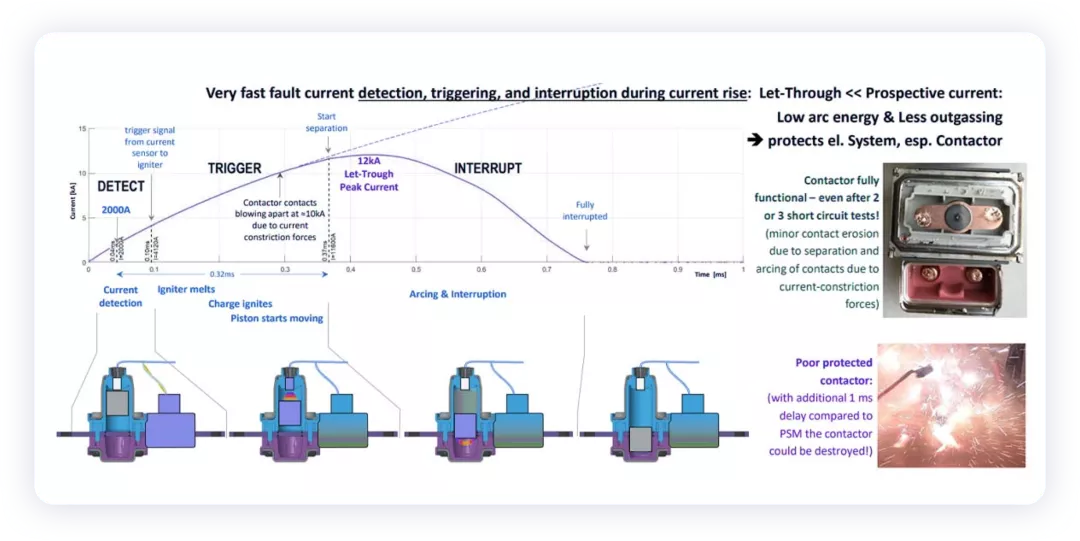
Our previous design’s biggest challenge was the temperature rise at high currents, as shown in the comparison design below. Under the same direct current fast charging operating conditions, the difference in temperature rise is significant.
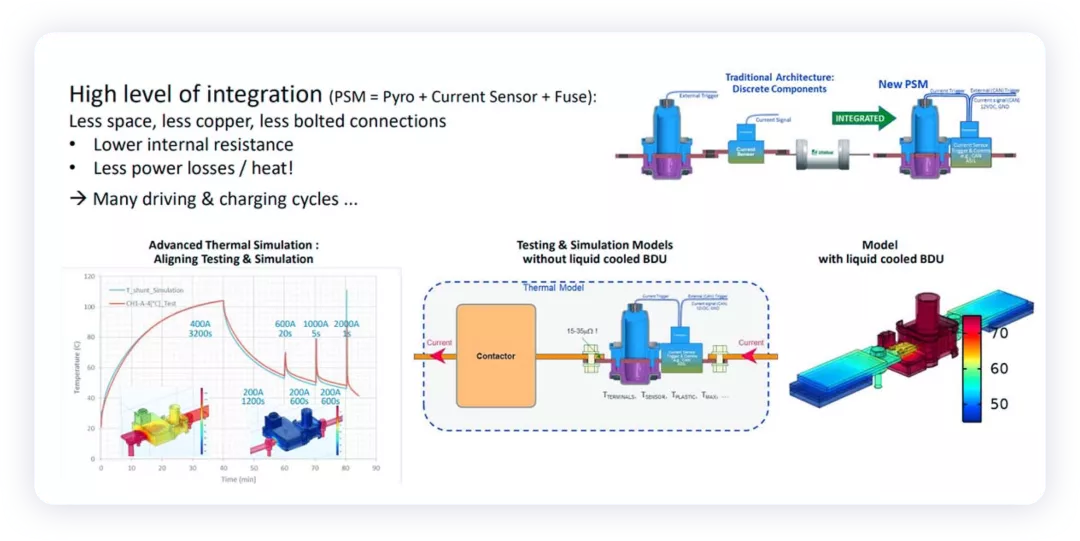
I have chosen a specification for your reference. The previous product manager contacted me to discuss this interesting solution. If anyone is interested, please feel free to contact me and I will introduce it on their behalf.
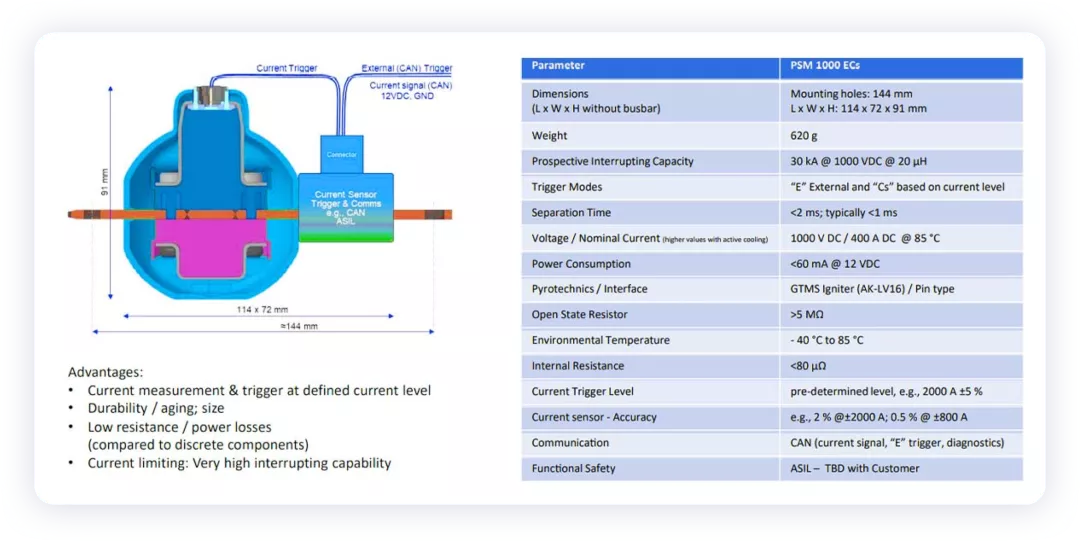
In summary, yesterday was my first day at my new job, and it was a completely different experience from my previous work.
In the future, I am more willing to explore some especially interesting aspects and share them in the forefront of technology in many automotive applications. I also welcome friends who do interesting innovations to communicate with me.
This article is a translation by ChatGPT of a Chinese report from 42HOW. If you have any questions about it, please email bd@42how.com.